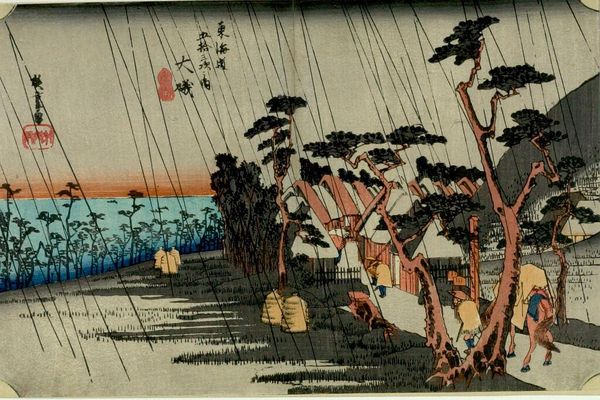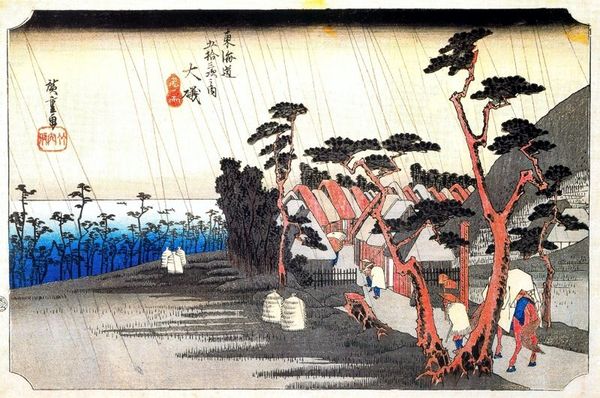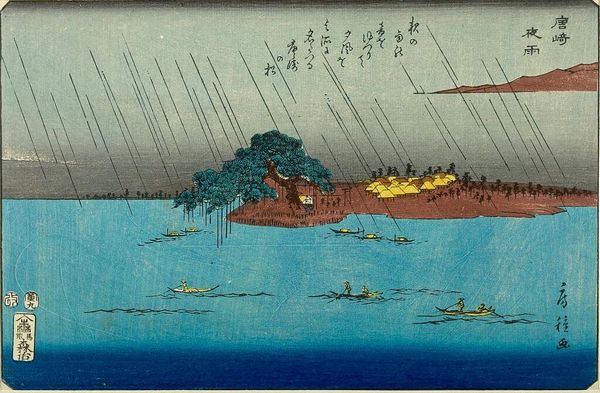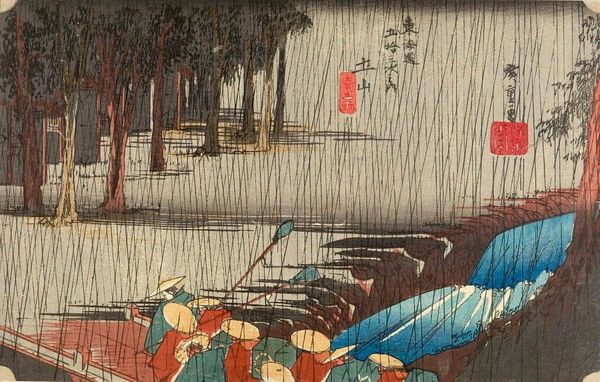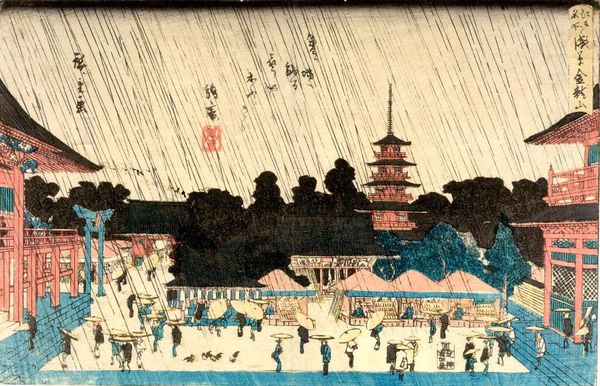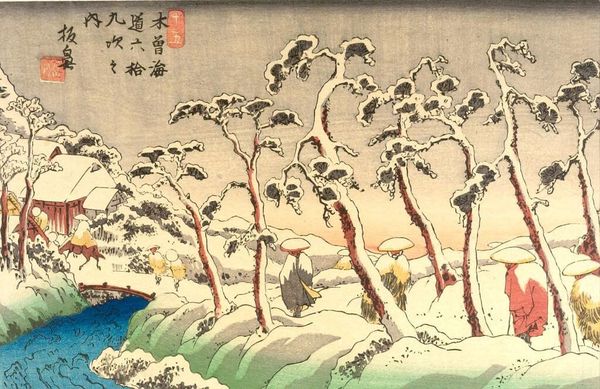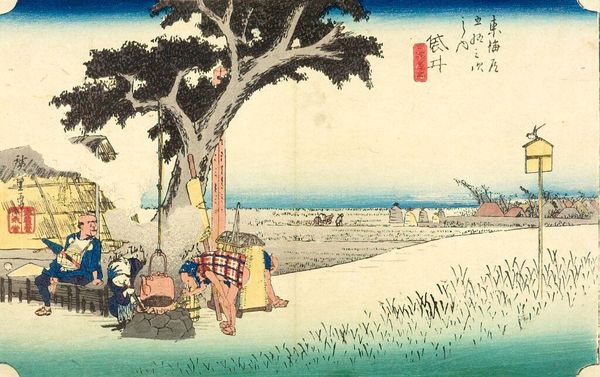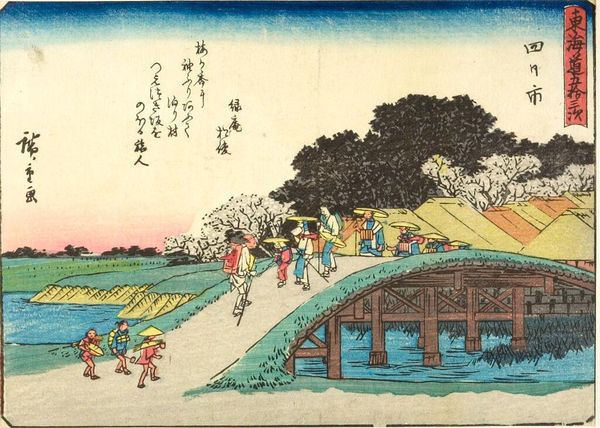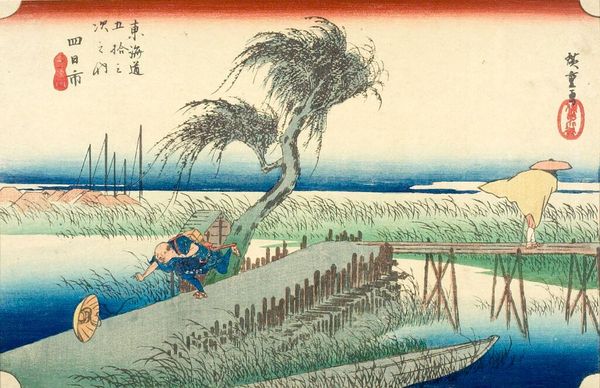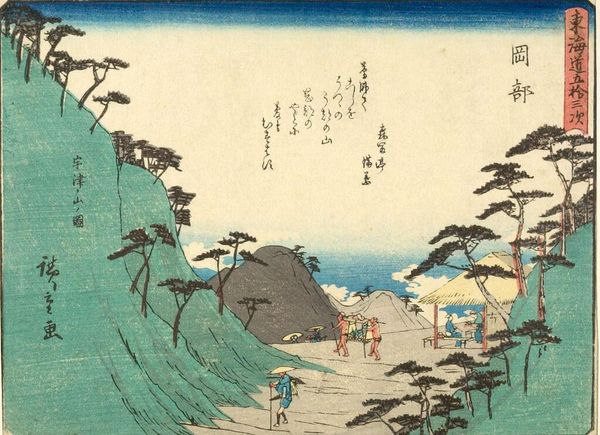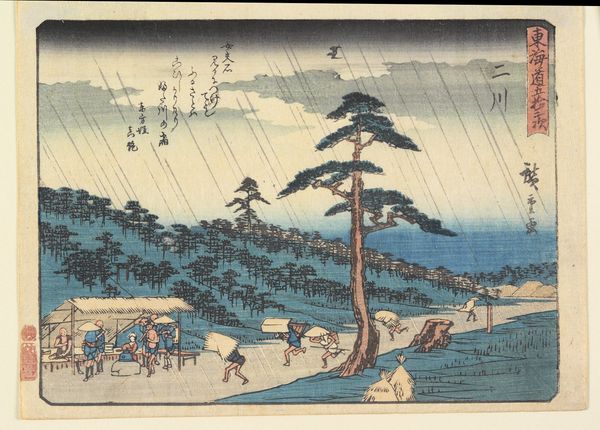
THE FIFTY-THREE STATIONS OF THE TOKAIDO, "OISO; TO RA NO AME" STATION 9 c. 19th century
0:00
0:00
Copyright: CC0 1.0
Curator: Hiroshige's woodblock print, "Oiso; To Ra No Ame," from his series "The Fifty-Three Stations of the Tokaido," really captures a specific moment. It's station number 9 in the series. Editor: Yes, the diagonal rain immediately creates a sense of urgency and makes me wonder about the labor involved in transporting goods. What are those bundles covered with straw? Curator: Those are likely rice bales, vital for sustenance and commerce along the Tokaido road. This print reflects the material realities of travel and trade in Edo-period Japan. Editor: The way Hiroshige uses line and color blocking to depict the rain, the landscape, and the figures speaks to the labor involved in the woodblock printing process itself. Curator: It also speaks to the socio-political importance of infrastructure. These stations weren't just rest stops, they were crucial nodes in the communication and control exerted by the shogunate. Editor: Absolutely! The rain, while visually beautiful, signifies a disruption, an obstacle to the smooth functioning of the Tokaido as a vital trade artery. Curator: Seeing this, I now appreciate Hiroshige's work as both beautiful and informative. Editor: Indeed! It makes me think about the tangible aspects of art, and how it captures the world around us.
Comments
No comments
Be the first to comment and join the conversation on the ultimate creative platform.
